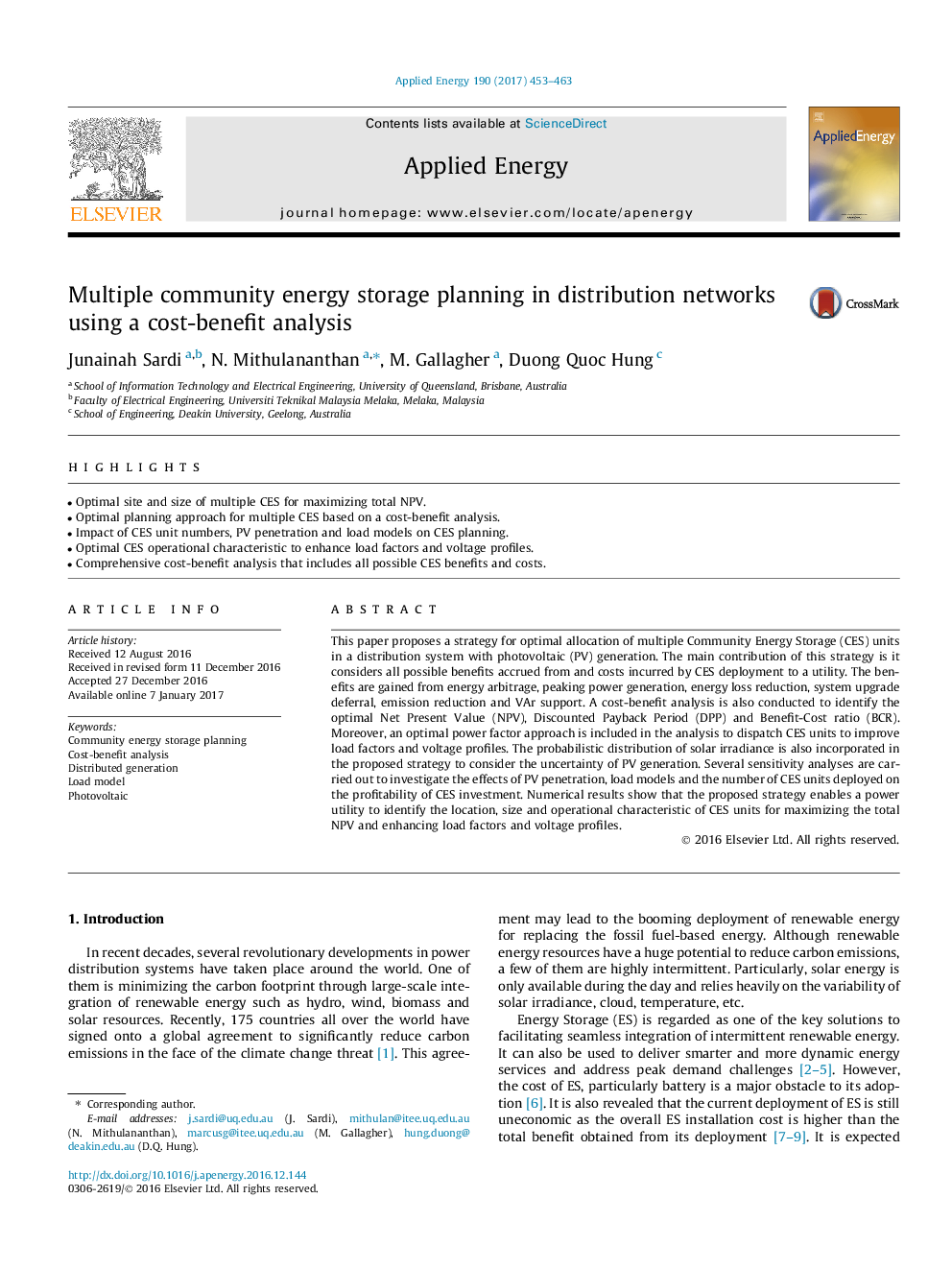| Article ID | Journal | Published Year | Pages | File Type |
|---|---|---|---|---|
| 6478528 | Applied Energy | 2017 | 11 Pages |
â¢Optimal site and size of multiple CES for maximizing total NPV.â¢Optimal planning approach for multiple CES based on a cost-benefit analysis.â¢Impact of CES unit numbers, PV penetration and load models on CES planning.â¢Optimal CES operational characteristic to enhance load factors and voltage profiles.â¢Comprehensive cost-benefit analysis that includes all possible CES benefits and costs.
This paper proposes a strategy for optimal allocation of multiple Community Energy Storage (CES) units in a distribution system with photovoltaic (PV) generation. The main contribution of this strategy is it considers all possible benefits accrued from and costs incurred by CES deployment to a utility. The benefits are gained from energy arbitrage, peaking power generation, energy loss reduction, system upgrade deferral, emission reduction and VAr support. A cost-benefit analysis is also conducted to identify the optimal Net Present Value (NPV), Discounted Payback Period (DPP) and Benefit-Cost ratio (BCR). Moreover, an optimal power factor approach is included in the analysis to dispatch CES units to improve load factors and voltage profiles. The probabilistic distribution of solar irradiance is also incorporated in the proposed strategy to consider the uncertainty of PV generation. Several sensitivity analyses are carried out to investigate the effects of PV penetration, load models and the number of CES units deployed on the profitability of CES investment. Numerical results show that the proposed strategy enables a power utility to identify the location, size and operational characteristic of CES units for maximizing the total NPV and enhancing load factors and voltage profiles.
